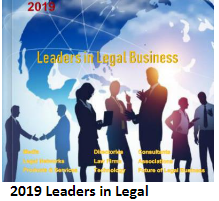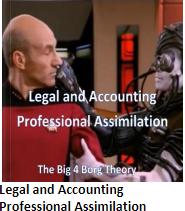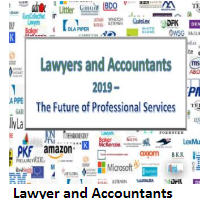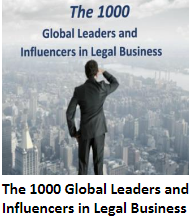Ron Friedmann Senior Director Analyst at Gartner
Ron Friedmann is the Senior Director Analyst at Gartner. He assists law firms by improving their practice and their firm’s business efficiency. Friedmann has extensive experience in legal project management, knowledge management, legal technology, outsourcing, process design, eDiscovery, consulting, and marketing. Prior positions include Integreon (SVP); Mintz Levin (CIO); Wilmer Cutler (head of practice support); and Bain & Company (consultant). He is a fellow and former trustee of the College of Law Practice Management and on the Board of Governors of the Organization of Legal Professionals. He publishes, speaks, blogs, and Tweets regularly. Education: J.D., New York University; B.A., Oberlin College.
_______________________________________________________________________
KM Definition and Benefits
Knowledge
Management (or “KM”) helps law firms win and keep business. For law
departments, it supports more efficient and effective operation. In a market
where clients demand value and efficiency, KM is essential to reduce cost while
maintaining quality.
KM captures and
reuses lawyers’ collective wisdom and helps identify lawyers with relevant
experience. It consists of both processes and systems that identify, save,
profile, disseminate, and use prior work and accumulated expertise to solve
legal and business problems. KM means many things to many people; this short
article provides an overview of how leading legal KM professionals view their
own discipline. This includes the recent expansion of KM to related
disciplines, including artificial intelligence (AI), legal project management (LPM),
and process improvement.
Early KM Focus: Documents, Precedents, and Professional Support Lawyers
Early work
product retrieval systems relied on key word (or “Boolean”) searches. These
systems turned out to be only somewhat helpful because they often yielded too
many irrelevant results. Moreover, even a relevant result might prove not as
helpful as hoped because it is so situation specific.
The limited
reuse value of work product led lawyers to try to develop precedents. They
quickly discovered, however, that creating precedents requires dedicated
resources. Good intentions notwithstanding, busy lawyers lack the time to
convert client-specific documents into more general precedents. To address this
gap, law firms hired professional support lawyers (PSLs) whose job includes
creating precedents. PSLs also monitor legal updates and perform other
functions.
PSLs are
expensive and typically only partially billable. This led to rise of commercial
services from Thomson Reuters, LexisNexis, and Bloomberg Law, which serve as
centralized, outsourced PSLs. Of note is that U.S. law firms hire fewer PSLs
than the U.K., Australia, and Canada. Few law departments have PSLs.
The explosion in the volume of email has challenged the document paradigm, and not in a good way. Many lawyers now dispense advice via email. Furthermore, too many lawyers use email software such as Outlook as a way to manage documents instead of using central document management systems. Capturing and reusing the advice rendered in email turns out to be even harder than doing the same with documents. Approaches to managing email are still maturing.
KM Evolves from Documents to Experience
Even when
lawyers can find relevant documents, precedents, or email messages with good
content, these materials have less reuse value than expected. The context in
which they were originally used is key to understanding and reusing them;
rarely, however, do documents convey that context.
An example of
capturing context — and immediate learning — is the U.S. military’s “after
action reviews” (AARs), a technique to debrief after an action (typically at
least daily) and capture the learning from it. A few firms and departments do
engage in AARs, but that is the exception.
Consequently, KM
emphasis shifted from finding documents to finding experts. The expert could
both identify useful documents and
explain their context and use. Early expertise location efforts relied
primarily on self-rating. These attempts almost always failed because lawyers
would not participate and, if they did, they typically under- or over-rated
themselves. As discussed below, search systems initially and now, specialized
systems help manage and locate experience.
Other, bigger
forces also shifted the emphasis from documents to experience. The 2008
economic crisis spawned many changes in law firms: First, marketing and
business development grew in importance. Second, firms hired pricing
professionals to set budgets and alternative fees. Third, management
started analyzing profitability by matter, client, partner, and type of
matter. And fourth, lateral partner movements markedly increased.
These new initiatives require accurate information about both a lawyer’s experience and the matter’s area of law:
- Winning Pitches Require Presenting the Most
Relevant Experience. Companies want lawyers with proven
expertise to solve their problems. Proving expertise — whether
in formal, written proposals or informally in discussions —
requires assembling a dossier showing the firm’s relevant experience
and best-fitting lawyers.
- Establishing Expertise Publicly. To
win the opportunity to pitch, firms must establish their expertise
publicly. This requires presenting specific matter experience by
practice, earning league table-top rankings, and winning awards. All
three require locating relevant lawyer experience and matters.
- Pricing and Profitability Analysis Requires
Accurate Historical Experience. Pricing professionals
need to find similar matters to estimate costs and set prices. To do
so, they need an accurate record of matter type and experience. Likewise,
analyzing profitability by matter type has the same requirement.
- Integrating Laterals and Cross-Selling. With lawyers regularly moving laterally to new firms, the complexion of cross-selling has changed. Personal connections and memory of prior matters no longer suffices. To cross-sell effectively, partners need a constantly refreshed source of information on matters and lawyers.
Enterprise Search Solved Many Problems – and New Products Will Do Even More
Around 2005,
technology emerged that helped address the challenges of PSL costs, absence of
context, increasing email volume, and an inability to systematically identify
experienced experts. Enterprise Search, a method of organizing information
derived from multiple sources, went well beyond keyword searches of Word and
PDF documents. This technology searches multiple sources of information —
documents, email, time entries, matter intake databases, and client
relationship management systems — and applies sophisticated algorithms to
create a retail-shopping-like search experience inside of law firms and
departments. These systems also demonstrated that finding a related matter is
very helpful, as finding a case similar to the one at hand identifies both
lawyers with experience and relevant documents.
With a few
words, lawyers can search for documents, email, matters, or experts and have a
very good chance that the system would show highly relevant results at the top
of a search result hit list. They also display search filters to narrow results
(for example, by jurisdiction, lawyer, or file type). Today, several products
are available to accomplish this, as described in more detail in the next
section.
Starting in 2016 and continuing into 2017 and beyond, Enterprise Search options have changed and improved. Many law firms are moving or are planning moves to newer software with greater capabilities. Some choices incorporate sophisticated artificial intelligence that will improve search. First, the software will “know” who the user is, his or her practice, and recent work. Those factors, previously untapped, will improve search results. And second, search likely will become embedded in other platforms such as document management or Microsoft Word. In that scenario, “search comes to the lawyer instead of the lawyer going to the search.” This has significant potential to improve lawyer efficiency. (For more detail on this point, see an August 2017 article my colleagues and I wrote, Transforming How Lawyers Work: AI-enabled Document Management.)
The Emergence of Specialized Experience Management Software
Around 2014, a
new class of software came to market designed specifically to manage
experience. Examples of brands include Foundation Software, Prosperoware
Umbria, and Neudesic Firm Directory. These offer a single enterprise system
that can power marketing, KM, finance, and other functions. The software allows
for collecting important details about lawyers and matters, offers
flexible reporting, integrates with other law firm systems, and has a simple-to-use
interface. Certain key information in these systems can be populated by Enterprise
Search discussed above, but experience software collects and manages much
valuable data beyond that.
For robust
experience management, however, software alone is not enough. Someone must
populate the data, if not lawyers, then staff to take a first cut and,
ultimately, to visit lawyers to collect the correct information. Reluctance to
hire staff for this has fallen as firms respond to the need to pitch,
price, and analyze profitability. Many marketing departments already
invest heavily to capture this type of data. Finance and new business intakes
often contribute. Likewise, KM departments happily contribute because
they can ride on the experience system coattails.
The Rebirth of Intranets as Practice Portals
Law firms and
law departments started building Intranets around 1995, shortly after HTML was
invented. Early Intranets focused on administrative information and static
legal content. With tremendous advances in the Web and content management,
forward-thinking legal organizations now build portals with dynamic legal
content.
Dynamic content alone,
however, is not enough. The advent of the iPad and iPhone has dramatically
affected design sensibility for all computer interfaces. Today, a good user
experience and user interface (UI/UX) is critical if lawyers are to use any
tool, especially a portal designed to support practicing lawyers.
Modern portals
are a great way to share KM content because they allow ready access to large
quantities of information with just a few mouse clicks or easy-to-use and
comprehensive search. It is essential, however, to understand that they do not
create content; they merely present it. Consistent work is required to collect
and categorize content and then to design an interface suitable for a lawyer’s
workflow
But few U.S.
firms have enough KM content to populate more than a few areas of an Intranet.
Additional value comes from using the Intranet to provide lawyers with
information to manage matters and clients. Modern Intranets have pages for both
clients and matters. Content displayed on those pages comes from other systems —
document management, financial, and news services — so that updates are all
automatic. Firms increasingly use matter pages to present financial dashboards
that allow lawyers to monitor time they bill and partners to monitor total
matter spend.
Making sure the
right people see the right data requires using “personas,” or user profiles, to
drive what the portal displays. A persona can be as general as a lawyer or
staff, or as specific a senior associate in a certain practice. Since network
login credentials identify a particular persona, the system can display the
appropriate legal content. The next level of sophistication is when portals
“know” what a lawyer is working on based on recent time entries, email, or
documents, and further customizes content based on that information.
The best portals rely on searches to populate some content, humans to populate other content, and an “app store” to allow for customization of the experience and quickly performing common functions such as looking up a client-matter number.
Specialized Content and Tools, including Artificial Intelligence, to Enhance KM
Law firms and
law departments can deploy a range of specialized tools to enhance KM across
practices. For litigation, West km and Lexis Search Advantage, products offered
by Thomson Reuters and LexisNexis, respectively, enhance enterprise search by
building document profiles, which then allow users easily to filter search
results by, for example, jurisdiction, judge, opposing counsel, or legal topic.
They also link online research to a firm’s work products.
More recently, a
whole class of AI products has come to market that helps lawyers work with deal
documents and contracts. Machine learning products such as Kira, RAVN, eBrevia,
and Seal automatically extract contract provisions, which accelerates due
diligence reviews. This type of product can also be used to construct clause
banks and determine “what’s market” within a firm for deal terms. (Numerous
start-ups offer other AI software for other aspects of contracts such as
negotiating contracts or comparing a contract to a corporate standard. These
companies typically target law departments and business users as much if not
more than law firms.)
Another new or
perhaps reinvigorated class of software is for deal management. This class of
software helps deal teams manage the multiple documents — and their signature
pages — within a law firm and across all parties in a transaction. Brands
include Doxly, Closing Folders, and Workshare Transact.
Not all useful tools are new. A wide range of document assembly tools allows automating frequently used documents. For corporate law departments, contract management lifecycle software helps with drafting, storing executed versions, managing rights and obligation, and anticipating renewal dates.
Even with Technology, Organizations Need Dedicated KM Staff
KM does not happen by itself. Few lawyers complete document profile fields or conduct after-action reviews. Many give documents titles that have little meaning to colleagues (or to the author, after a few weeks pass). Machine learning tools for due diligence must be evaluated, selected, and sometimes trained for a specific firm’s document types. And even with enterprise search and especially with portals, someone must be in charge of KM. Many law firms have directors of KM, and some have chief knowledge officers. Note that these roles are separate from PSLs, who may report to the CKO or to practice group leaders. PSL typically reports (sometimes directly, sometime with a dotted line) to the head of KM.
KM Remit and Priorities Vary Considerably
KM in law started
in the 1990s, usually under a different label, and by 2000, firms were hiring
KM directors or chief knowledge officers. By 2005, it became clear that KM was
not a monolithic discipline — and that it was changing regularly.
A June 2017 survey (that I designed and analyzed) of about 40 KM professionals from 40 large U.S. and Canadian law firms conducted under the auspices ILTA (International Legal Technology Association — the leading professional group of legal IT and KM professionals) shows the significant variation in current KM priorities:
Another survey, one that I conducted for a private group of large law firm KM professionals that meets annually, shows how priorities of KM professionals shift over time. This survey, conducted in January 2017, had about 80 respondents from large firms in the U.S., U.K., and Canada. The details may be hard to read, but two points stand out: First, KM professionals focus on many activities, and second, priorities have, in many instances, shifted significantly over time:
Opportunity Lost and Now Regained? Collaboration and Social Media
Knowledge
management often includes efforts to improve collaboration within firms and law
departments and between clients and firms. Many lawyers and KM professionals
initially thought that the firms and departments could borrow from the advent
of Web 2.0 and an array of consumer social media services. Starting around
2010, many law firms experimented with internal social media tools (e.g.,
Yammer), but few if any of these efforts succeeded. Early disappointment led to
several years of low interest in trying collaborative tools.
More recently, a new generation of legal-specific products has come to market holding new promise. Examples include ThreadKM and Neudesic Pulse. These products tie either to the document management system or sit inside of a law firm portal and offer the promise of success. In addition to the goal of reducing the volume of email traffic and making email relate more clearly to matters, information governance considerations also drive some of these efforts.
Information Governance, Records Management, Document Management, and KM
For several
years, driven by eDiscovery and other legal requirements, lawyers focused on
records management. RM generally means classifying documents and email so that
they can be preserved or destroyed according to defined schedules. The RM
concern has recently broadened to Information Governance (or “IG”), which deals
with security, acceptable uses, and retention. For example, organizations may
need to lock down documents with personally identifiable information such as
social security or credit card numbers.
Some of the
goals of IG, for example, limiting document access to just the team working on
a matter, are at odds with the goals of KM. This trend is accelerating rapidly
now with cyber breaches occurring regularly. A common practice is to assume
that hackers will breach a law firm perimeter, often by phishing, which means
gaining a specific user’s credentials. Once a hacker is inside, locking
documents to the team working on them minimizes the amount of information a
hacker can access.
These changes may end up rewriting the KM playbook. Part of the rewrite will be a fresh look at document management systems (DMS) in law firms. Virtually every large firm has a DMS. But in many if not most firms, roughly half of lawyers do not regularly use it. That creates enormous security risks. Fortunately, a new generation of document management products is coming to market that help the security issues, and via better tracking of document history and/or artificial intelligence, provide strong pointers to lawyers who have knowledge of the matter, legal issues, and documents involved.
Developing a KM Plan
So how should a law firm or department start with or integrate KM? The answer, of course, depends on where that law firm is now, what competitive pressures it faces, and what resources it has. What follows is a rough inventory and sequence that applies to many firms and departments.
· Deploy Enterprise Search
o Make it easier
for lawyers to find work product and colleagues with expertise.
· Improve Experience
Management with Better Matter Intake and an Experience Management System
o More systematic
matter intake that collects richer profile information will enhance search
results. A reasonably-sized taxonomy helps here.
o In law
firms, marketing and finance will also benefit from better matter profile data
that allow, for example, more easily identifying prior matters related to an
RFP and aggregating like matters for profitability analysis.
o Licensing
specialized experience management software allows capturing additional
information about lawyers and matters, and then using that for pitches, staffing,
and helping lawyers find experienced colleagues.
· Evaluate Specialized Search for Litigation
Documents
o West km and
Lexis Search Advantage extract citations, jurisdictions, judges, and law firm
names from litigation documents. It enhances searches and integrates online
legal research to a firm’s or department’s work product.
· Try Professional Support Lawyers (PSLs)
o Test the
value of one or more full-time professional support lawyers (PSLs) to find,
create, and maintain KM content.
o Metrics for
proving ROI are hard to define, so the value is a judgment call.
· Develop an Email
Management Strategy
o Look for a
proven email filing and search systems, which means keeping an eye on
specialized products
· Hire a KM Professional
o Deploying
search, email management, and building KM resources requires that this be
someone’s full-time job.
· Develop a Portal Strategy
o Develop
plans for a new, continuously maintained portal with a practice-focused user
experience that is rich in content. Make sure to use personas and to invest in
good design.
· Evaluate and Consider
Deploying AI tools
o Many firms
have already licenses AI tools, especially machine learning for accelerating
due diligence.
o So develop a
program to evaluate AI tools and their economic impact. Be prepared to deploy,
depending on the evaluation outcome.
· Evaluate New Ways to
Collaborate and Communicate
o Lawyers are
drowning in email. In their personal lives, lawyers use social media and
collaborative software.
o Despite
early experiments that have failed, keep trying new tools for and approaches to
web-based collaboration.
· Develop a Vision for the
Electronic Matter File
o In the
digital world, there is no single place for all of the materials related to a
matter.
o Technology is improving to pull different types of information from multiple systems into a single, easy-to-use program that consolidates the data and provides context-sensitive views of it.
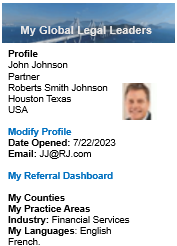
 Software
Software Law
Law Legal
Legal
